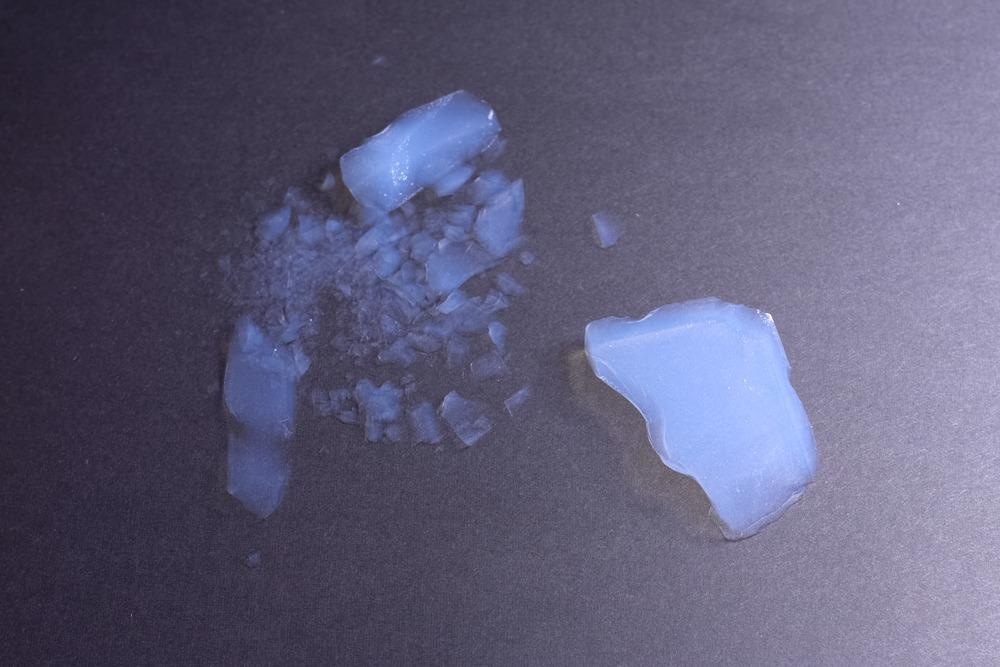.jpg) By Susha Cheriyedath, M.Sc.Reviewed by Skyla BailyNov 25 2021
By Susha Cheriyedath, M.Sc.Reviewed by Skyla BailyNov 25 2021Researchers from China recently fabricated super-elastic graphene aerogels (SGA) using ambient pressure drying, thus enabling the large-scale preparation of high-performance graphene aerogels. The as-prepared SGA showed better overall performance and remarkable oil adsorption compared to graphene aerogels produced by freeze-drying.

Study: Fabrication of super-elastic graphene aerogels by ambient pressure drying and application to adsorption of oils. Image Credit: LuYago/Shutterstock.com
The research was published in the Chinese Journal of Chemical Engineering.
Challenges in Preparing Graphene Aerogels
Three-dimensional (3D) graphene-based aerogels are highly porous carbon materials made up of two-dimensional graphene sheets. They are widely used in oil adsorption and environmental restoration applications due to their high specific surface area and ultra-low density. However, poor mechanical properties, high fabrication cost, and low recycling efficiency of graphene-based aerogels hinder further research.
Atmospheric pressure drying is a technique used to fabricate graphene aerogels and is performed under ambient pressure. Compared to freeze-drying and supercritical drying, its advantages include ease of use, low energy consumption, and short production cycles. However, the graphene aerogel is usually not strong enough to withstand the capillary pressure generated during solvent evaporation under ambient pressure and temperature conditions. This causes volume shrinkage and collapse of the graphene aerogel structure. Thus, atmospheric drying is a major challenge in the industrial fabrication of high-performance graphene aerogel.
In this work, researchers prepared SGA via a process involving one-step freezing, twice hydrothermal reduction, and drying under ambient pressure. The as-prepared SGA can resist solvent evaporation and showed no volume shrinkage during ambient pressure drying.
What did the Researchers Do?
Graphene hydrogel was produced by the reduction of graphene oxide (GO) followed by freezing the prepared hydrogel under -30 °C for 1 h and thawing again at 90 °C for 200 min. The hydrogel was then washed with ethanol and dried to obtain graphene aerogel.
Increasing Performance of 3D Printed MXene Aerogels
The GO and SGA functional group structures were analyzed using Fourier transform infrared spectroscopy (FTIR) and their crystal structures were studied with the help of an X-ray diffractometer (XRD). A scanning electron microscope (SEM) was used to observe the microstructures of SGA. The researchers also analyzed the morphology, surface properties, and adsorption properties of the SGA.
What Did They Find?
The researchers analyzed the effect of reducing agent dosage, pH value, and pre-reduction time on aerogel formation. They found that the degree of contraction of aerogels became more significant with the increase of reducing agents (L ascorbic acid). This is because as the amount of reducing agent increased, deoxidation increased, which in turn increased the π-π interaction between the graphene sheets and thus, the volume of the formed graphene aerogel decreased.
They also found that prereduction time can directly affect the graphene aerogel volume and a perfect 3D graphene aerogel was obtained by gradually increasing the prereduction time. However, when the pre-reduction time exceeds a certain value, the π-π force becomes so large causing severe stacking between the graphene sheets, which leads to huge shrinkage in aerogel volume.
Regarding pH, the color of GO dispersion was found to gradually deepen with the increase in pH. Also, the volume and porosity of the aerogel prepared under acidic conditions were significantly greater than that prepared under alkaline conditions.
Advantages of SGA
The simple atmospheric drying process used in this work facilitates the large-scale preparation of high-performance graphene aerogels. The as-prepared SGA had a highly repeatable compression rebound and also exhibited remarkable oil adsorption performance.
The freezing process facilitates the formation of a 3D porous aerogel structure by forming ice crystals, that increase the pore wall folding, which leads to improvement in the mechanical properties of the aerogel. Thus, freezing enhances the skeletal strength of the aerogel to withstand the capillary pressure during drying.
The prepared SGA also showed better overall performance than most graphene aerogels prepared using the freeze-drying method. The SGA had the ability to return to its original shape and height after cyclical compression with 70% strain 300 times.
On testing the cyclic adsorption capacity of SGA for oil with cyclohexane adsorbent, it was found that after 50 times cyclic adsorption, the adsorption capacity of cyclohexane by SGA remained about 90% of the original value, which is greater than all recently reported graphene aerogels.
Conclusions
To summarize, the work demonstrated the preparation of a highly compressible, super-elastic SGA from GO and L-ascorbic acid using a process involving one-step freezing and two-step hydrothermal reduction under ambient pressure.
The excellent compression resilience and fatigue strength of these graphene aerogels meant that even 300 cycles of compression could not damage the SGA surface and structure. The SGA has an adsorption capacity of a unit mass of 92.94 cm3 g and an excellent cyclic adsorption ability for organic compounds. Thanks to its improved properties, SGA prepared using the atmospheric drying process can have extensive applications in oil adsorption.
Disclaimer: The views expressed here are those of the author expressed in their private capacity and do not necessarily represent the views of AZoM.com Limited T/A AZoNetwork the owner and operator of this website. This disclaimer forms part of the Terms and conditions of use of this website.
Source:
X. Zhao, W. Xu, S. Chen, H. Liu, X. Yan, Y. Bao, Z. Liu, F. Yang, H. Zhang, P. Yu, Fabrication of super-elastic graphene aerogels by ambient pressure drying and application to adsorption of oils, Chinese Journal of Chemical Engineering (2021), doi: https://www.sciencedirect.com/science/article/pii/S1004954121005711?via%3Dihub